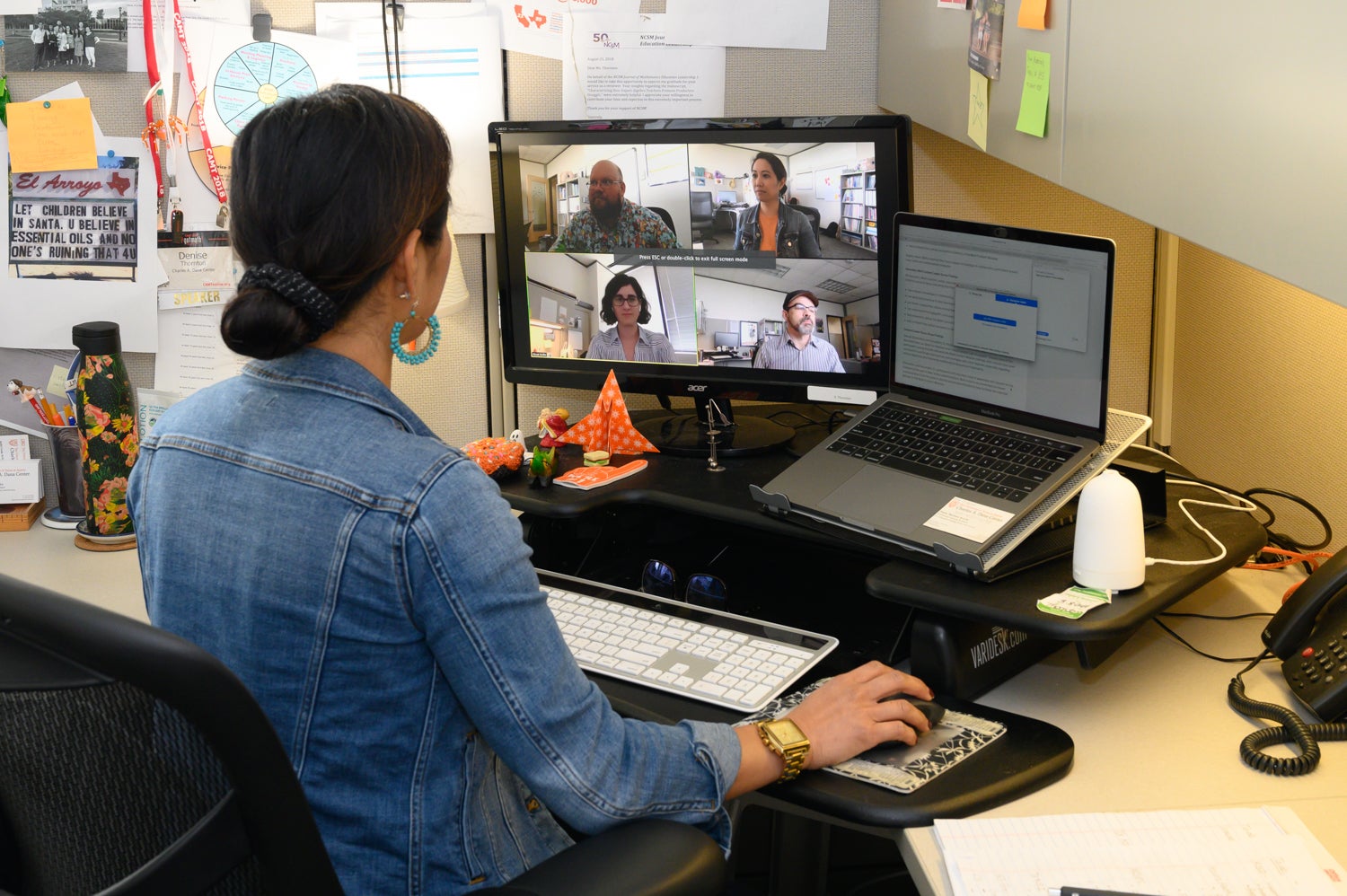
Shifting to Virtual Teaching in Higher Ed Mathematics – Part 1
This is the first in a three-part series of blog posts discussing faculty and student experiences in making the transition to virtual teaching and learning during the COVID-19 crisis.
Part 2: “Student voices in the transition to virtual learning”
Part 3: “Recommendations for meeting student needs in virtual classes”
Accounting for student needs as we redesign the ways we teach
As higher education instructors, we are all scrambling to redesign our courses to teach students remotely. We’re sharing best practices, brainstorming innovative solutions (how do you teach a lab course virtually?), and writing thoughtful pieces to share advice across the field. The urgency and immediacy of the problem are creating a whiplash effect.
Everyone is stretched to capacity responding to the question “How do we redesign courses intended for face-to-face teaching to work effectively in an online environment?”
That question alone leads to a cascade of other questions, such as:
- What is Zoom and how does it work? What in the world is Zoombombing? Do I actually have to learn all functions of Canvas now?
- Should I teach completely asynchronously or incorporate synchronous components to simulate what we were doing before?
- How do I turn my phone into a document camera (because document cameras on Amazon are sold out)?
- How do I give a mathematics exam online? Should I even give an exam? Does proctoring software violate students’ privacy? Can I come up with a more valuable task in which students can engage?
- How do I make sure students aren’t cheating on an exam? Does it even matter if they’re cheating?
- How do I engage students in a meaningful way? How do I moderate a discussion and monitor the chat box? How do I encourage them to study together? Is that my job?
 After spending recent days playing whack-a-mole with these types of technical and logistical questions, I shifted gears. I decided to check-in directly with past students to see how they are faring now and to get their thoughts on the current situation. Some of their responses will be featured tomorrow in Part 2 of this blog series.
After spending recent days playing whack-a-mole with these types of technical and logistical questions, I shifted gears. I decided to check-in directly with past students to see how they are faring now and to get their thoughts on the current situation. Some of their responses will be featured tomorrow in Part 2 of this blog series.
Their answers to the question “How are students doing?” are, like everything else right now, complicated. Some students are fine. Some are mostly fine (for now). Some are truly struggling.
The students’ responses were candid, considered and, in a few cases, worrying. They led me to ask another set of deeper questions:
- What does our current situation mean for our relationships with students?
- Will students view instructors as the only consistent point of contact with our institutions?
- Do we now have an increased responsibility to monitor and care for our students’ well-being?
- How does this help us become better community members in a time when everyone has to do more?
- What are the consequences if we don’t step up?
The work being done to convert courses for online delivery is important and urgent. But we are not only transitioning to virtual teaching; we are also asking our students to transition to online learning—and this shift is happening in the context of a pandemic. Students need us to acknowledge that fact and be flexible and caring. We, as instructors, faculty and staff, are resilient and innovative. Students need to know we will troubleshoot issues within our courses as they arise. Our process will not be perfect, and students shouldn’t need or expect it to be.
Students do need and expect us to prioritize their learning and best interests. Although we can’t solve every problem our students will face in the coming weeks, maybe we can connect them to an administrator, university leader, or friend who can help. As faculty, we have a great amount of collective privilege and resources. Right now, we should leverage our positions and those resources in a focused manner to help our students.
More in the blog series “Shifting to Virtual Teaching in Higher Ed Mathematics”:
Part 2: “Student voices in the transition to virtual learning”
Part 3: “Recommendations for meeting student needs in virtual classes”
Are you a higher ed mathematics faculty member shifting to online teaching?
Be sure to join us in our free webinar series: "Transitioning Higher Education Mathematics Courses to Virtual Teaching" – weekly on Thursday afternoons April 2-April 16. Discuss your questions and share strategies for success in transitioning your teaching to the virtual environment.
About the Author
Erica Winterer
I taught high school in New Orleans and learned how to survive day to day by working with diverse sets of resilient educators, administrators, and students. I learned that regardless of teaching expertise, we can always make students feel like their learning and future trajectories are a priority. As a doctoral student at The University of Texas at Austin, I’m grateful to have the opportunity to teach freshman calculus students with my advisor, Professor Uri Treisman.
Get in Touch
How can the Dana Center work with you to ensure that our nation's students are ready for postsecondary education and the contemporary workforce?

